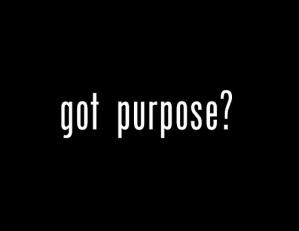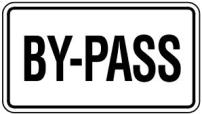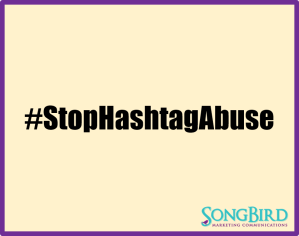 We’ve all been blown away by a marketing/PR campaign at some point or another. Whether it’s an amazing string of ads, a hashtag that went viral, or a story that tugged on heartstrings. In such a crowded marketplace – for all industries – and with the increasing popularity of digital in campaigns, consumers are bombarded with hundreds of campaigns on a daily basis.
We’ve all been blown away by a marketing/PR campaign at some point or another. Whether it’s an amazing string of ads, a hashtag that went viral, or a story that tugged on heartstrings. In such a crowded marketplace – for all industries – and with the increasing popularity of digital in campaigns, consumers are bombarded with hundreds of campaigns on a daily basis.
The challenge for brands is to deliver rapid results to hit all the targets set out in the campaign strategy. How are you going to do that if you are copying someone else’s strategy? Or, another brand’s creative ideas? In order to stand out among the crowd, you need to be different. A cookie-cutter strategy isn’t going to work for you because you aren’t the same as your competitors.
Unfortunately, marketing has been around for a long time, and this means that a lot of ideas have been trying and tested, proving to deliver strong results. It’s like jazz or blues music. You can sample from another artist in a solo, but you have to give it your own sound, otherwise you are just copying. What are you bringing to the table?
Here are things to look out for when you are trying to inject your own brand personality into your campaign.
- Don’t be distracted by the competition: They’re not going anywhere anytime soon, but dwelling on what they’re doing for their own campaigns will put you off the path you need to be on to discover your own successes.
- Define your brand messaging: This can mean taking a step back to define your industry. Are you a locksmith, or a freedom expert? Your brand messaging is the basis for your brand story. You should be able to jot down 5 to 10 key sentences about your brand and what it is that you do.
- Appeal to your ideal audience: You don’t need to be all things to all people. If you pick a niche in your industry, chances are you will be able to make a splash and then expand from there. Using a blanket technique to see how many people you can cover won’t necessarily give you the best return on your efforts.
- Tell your own story: Once you have your messaging in place and you know who you want to tell it to, think of different narratives that will exemplify what you want your audience to think of when they hear your brand name. This has everything to do with your content strategy. The content you develop should be different than other brands because you should have an opinion or an approach that is unique to your business.

- Determine your language style: How are you telling your story? Your brand is like a person, with a personality and language all its own. If you are a young, fresh brand, you wouldn’t use as much “industry-speak” and try to out-smart your customers (actually not a great idea in any case), but you might use a lot of colloquial and slang language. Pretend that your brand is speaking to someone else and write that way.
- Empower your team: whether they are senior management or entry-level employees, empower them to live your brand and enjoy what it is you stand for. There is nothing more unique than a team of individuals bringing their own perspectives.
 Bonus Tip: There are marketing/PR agencies out there who use a cookie-cutter template when they put together campaigns as a cost-cutting measure on their end. If you are working with an agency, be sure to ask a lot of questions and get to know their previous campaigns to make sure that you are getting something that is unique for you.
Bonus Tip: There are marketing/PR agencies out there who use a cookie-cutter template when they put together campaigns as a cost-cutting measure on their end. If you are working with an agency, be sure to ask a lot of questions and get to know their previous campaigns to make sure that you are getting something that is unique for you.

 doing this?” Just doing a public stunt or event for the sake of doing it because you think it’s cool could mean that you will waste a huge chunk of your marketing budget on something that isn’t going to get you anywhere. For example, if you are a corporate law firm looking to get new clients, you wouldn’t throw a flash mob at the mall (sometimes an exaggerated example gets the point across). Here is where you will set your goals to determine what you want to achieve with this tactic.
doing this?” Just doing a public stunt or event for the sake of doing it because you think it’s cool could mean that you will waste a huge chunk of your marketing budget on something that isn’t going to get you anywhere. For example, if you are a corporate law firm looking to get new clients, you wouldn’t throw a flash mob at the mall (sometimes an exaggerated example gets the point across). Here is where you will set your goals to determine what you want to achieve with this tactic. #3: Come up with a creative concept. Once you have a purpose and goals, it’s time to come up with a concept. What are you going to do to achieve your goals? It’s great to have a look at what some other companies have done, but it’s also important that you make it your own. The last thing you want is the media or your audience online talking about how you copied someone else’s idea. Equally important, your idea should fit your brand identity. You want people to immediately associate the stunt with your brand when they discuss it with their friends. Unless you have the brand awareness of, say Pepsi (and the budget to go along with it), you are going to need to do some legwork to make the connection, so make it easy for yourself.
#3: Come up with a creative concept. Once you have a purpose and goals, it’s time to come up with a concept. What are you going to do to achieve your goals? It’s great to have a look at what some other companies have done, but it’s also important that you make it your own. The last thing you want is the media or your audience online talking about how you copied someone else’s idea. Equally important, your idea should fit your brand identity. You want people to immediately associate the stunt with your brand when they discuss it with their friends. Unless you have the brand awareness of, say Pepsi (and the budget to go along with it), you are going to need to do some legwork to make the connection, so make it easy for yourself. means making a list of everything that has to be done to ensure the success of your stunt – will you have food, refreshments, entertainment, signage, etc. After you have made your list, work backwards from the date you have chosen to create a realistic timeline for when everything will need to get done. Remember that things often take longer than you would expect, and you should always give yourself a buffer time zone. Scheduling things to take place down to the wire is always tough, both on you as well as the vendors you have chosen.
means making a list of everything that has to be done to ensure the success of your stunt – will you have food, refreshments, entertainment, signage, etc. After you have made your list, work backwards from the date you have chosen to create a realistic timeline for when everything will need to get done. Remember that things often take longer than you would expect, and you should always give yourself a buffer time zone. Scheduling things to take place down to the wire is always tough, both on you as well as the vendors you have chosen.
 Before the holidays we talked about
Before the holidays we talked about  buzzwords that you really can’t get away from. In business, cash is king, but in marketing, content is king.
buzzwords that you really can’t get away from. In business, cash is king, but in marketing, content is king.
 Final thoughts.
Final thoughts.

 Even if someone couldn’t attend, they still benefit from the information and it establishes your brand as an expert in the industry.
Even if someone couldn’t attend, they still benefit from the information and it establishes your brand as an expert in the industry.


 So many business leaders compartmentalize marketing into silos. This happens for a number of reasons. Maybe you have a large corporation, some people think it is easier to look at things in separate pieces, and others don’t understand the power that marketing can have, they just see it as a necessary function of business because that is what they were taught.
So many business leaders compartmentalize marketing into silos. This happens for a number of reasons. Maybe you have a large corporation, some people think it is easier to look at things in separate pieces, and others don’t understand the power that marketing can have, they just see it as a necessary function of business because that is what they were taught. We hear so many people talking about launching a “provocative marketing & PR campaign”, but what does that really mean? Contrary to popular belief, it’s not just about sex, It’s not just about raising eyebrows, and it definitely does not mean being blatantly offensive. The key is to make your audience sit up and take notice and invest in your brand emotionally. A provocative marketing and PR campaign means you are generating creative and thought-provoking content.
We hear so many people talking about launching a “provocative marketing & PR campaign”, but what does that really mean? Contrary to popular belief, it’s not just about sex, It’s not just about raising eyebrows, and it definitely does not mean being blatantly offensive. The key is to make your audience sit up and take notice and invest in your brand emotionally. A provocative marketing and PR campaign means you are generating creative and thought-provoking content. Having worked both with industry pros who have been in business for over 15 years as well as the new generation of marketing and PR professionals, I have been privy to the difference in approach that both brings to the table. When creating a Marketing and PR strategy, it is important to integrate both approaches to get the most out of your efforts.
Having worked both with industry pros who have been in business for over 15 years as well as the new generation of marketing and PR professionals, I have been privy to the difference in approach that both brings to the table. When creating a Marketing and PR strategy, it is important to integrate both approaches to get the most out of your efforts.
 rules to live by as you approach your Marketing & PR strategy both from an Old School and a New School perspective:
rules to live by as you approach your Marketing & PR strategy both from an Old School and a New School perspective:
